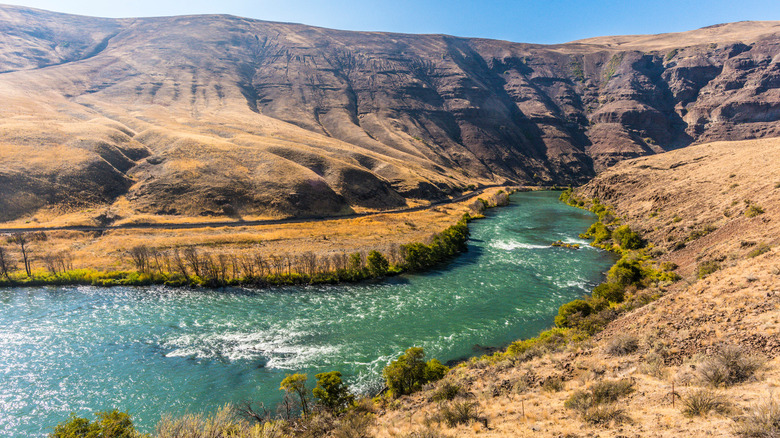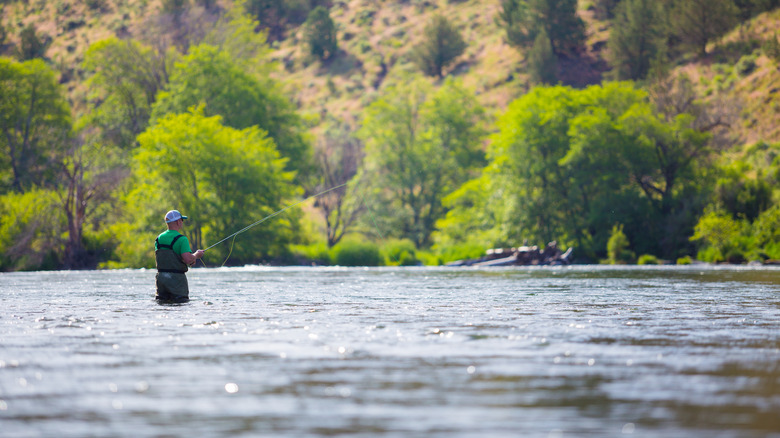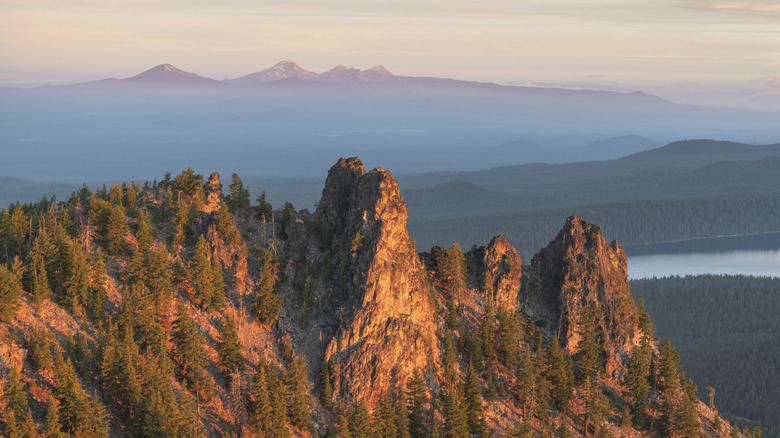Central Oregon's Wild And Scenic River Is A Rafting, Biking, And Camping Mecca With Desert Canyon Views
Whether you're angling for a Blue Ribbon fly fishing destination, a place to put in your kayak or paddleboard, or a new bikepacking route, look no further than the marvelous Deschutes River in central Oregon. Also known as the "Rivière aux Chutes," French for "River of Falls," it consists of three parts — Upper, Middle, and Lower — which collectively span 252 miles from end to end. Whether cutting through rugged canyons of colorful geological formations made from basalt and ash, winding through downtown Bend, or flowing through the stunning tableland of the Deschutes-Umatilla Plateau, its recreation possibilities are practically endless.
On its northward journey to the Columbia River, this picturesque and historic waterway begins modestly in the Cascade Mountains at Little Lava Lake. Like this nearby secret glistening lake offering uncrowded camping, the area offers endless opportunities for hiking, horseback riding, picnicking, and exploring scenic byways. It's not just limited to the mountainous Deschutes National Forest, either. In 1970, the lower 100 miles were designated as an Oregon Scenic Waterway, boasting one of the Beaver State's canyon utopias with secluded waters and scenic views, whitewater perfect for rafting, and top-notch steelhead and trout fishing.
Wade or bike around the Lower Deschutes
Tumbling into the Columbia River Gorge National Scenic Area, itself a remarkable river canyon stretching 80 miles, the Lower Deschutes River is something to write home about. The elevation drops more than 1,200 feet, from 1,393 at Pelton Dam to only 160 at the Columbia River. That's an average of about 13 feet per mile, which means energetic whitewater like Rattlesnake, Colorado, and Washout Rapids and stunning cascades like Sherars Falls. To date, day use permits for the falls from the Confederated Tribes of Warm Springs run $20, granting access to the remarkable view and the possibility of observing the time-honored Indigenous method of fishing for salmon from wooden scaffolds and nets.
The Lower Deschutes River Trail offers a range of cycle routes for different experience levels on well-maintained gravel trails. Usually accessible year-round depending on the weather, spring and fall are prime times for a ride to avoid the intense heat of summer and the winter cold. Pack ample water and a spare tire tube or two, as pesky "goat head" seeds on the ground have a knack for causing flats.
For about 11 miles, starting at the Deschutes River State Recreation Area, a wide, rolling track is perfect for beginners who want to spend one night camping and ride back the next day, traversing 22 miles round-trip. For more experienced riders or longer trips, the path narrows and the terrain gets more challenging after those initial 11 miles, but if you love to scrabble through some canyons and maybe do a little hike-n-bike, you're in for a treat.
Hike through lava flows or surf Bend's wave
It's not just about the Deschutes' scenic lower 100 miles, though. Among some of Oregon's best underrated destinations for a quiet vacation, the remaining stretches of the river offer myriad options for camping and recreation upstream, too. The Middle Deschutes offers fantastic hiking opportunities along the Steelhead Falls Trail, with primitive campsites open year-round. In the springtime, keep an eye out for wildflowers like prairie stars, sand lilies, and lupines. On the Upper Deschutes, which wends its way toward Bend from the Cascades, the brown trout fishery is a standout, and you're a stone's throw from the stunning, 54,000 acres Newberry Volcanic National Monument.
The city of Bend delights in its own stretch of the river, with ample opportunities to canoe, kayak, paddleboard, tube, raft, and even surf its waters. Bend Whitewater Park comprises three separate channels for viewing or immersing yourself. One is dedicated entirely to wildlife, to protect migrating species, while the other two offer experiences of the rapids that vary by skill level. In the summer, rent a tube from Tumalo Creek Kayak & Canoe and take advantage of Cascade East Transit's Ride the River shuttle, which costs only $5 for one day of unlimited rides from Riverbend Park back to the put-in spot in Drake Park.
If taking to the water, it's recommended to always plan your route carefully ahead of time. Some Deschutes River rapids and falls are not boatable, and rainfall can drastically alter how wildly the river runs. In Bend, for example, it's not possible to float the entire length of the river, so research ahead of time where to put in your kayak or tube and you'll be set for boatloads of fun.


